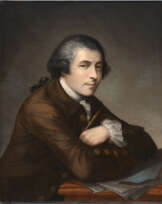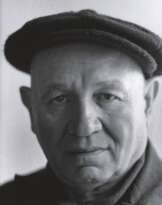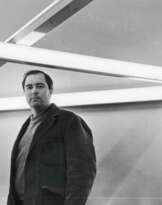John McLaughlin (1898 - 1976)

John McLaughlin
John Dwyer McLaughlin was an American artist. He was a prominent figure in the development of minimalism and hard-edge painting in the United States.
McLaughlin initially studied philosophy and art history at Harvard University, and later studied painting in Europe. In the 1930s, he became interested in Japanese art and philosophy, and began to develop a style of painting that was influenced by Zen Buddhism and the aesthetics of Japanese calligraphy.
McLaughlin's work is characterized by its simplicity and abstraction, and he often used large blocks of color and geometric shapes in his compositions. His work was seen as a reaction against the emotional and expressionistic tendencies of abstract expressionism, and he was a leading figure in the development of minimalism and hard-edge painting in the 1950s and 1960s.
McLaughlin's work has been exhibited in museums and galleries around the world, and he is widely considered one of the most important American painters of the 20th century. His influence can be seen in the work of a number of younger artists working in the fields of minimalism and abstract art.
| Date and place of birt: | 21 may 1898, Sharon, USA |
|---|---|
| Date and place of death: | 22 march 1976, Dana Point, USA |
| Nationality: | USA |
| Period of activity: | XX century |
| Specialization: | Artist, Painter |
| Art style: | Hard-edge painting, Minimalism |







































